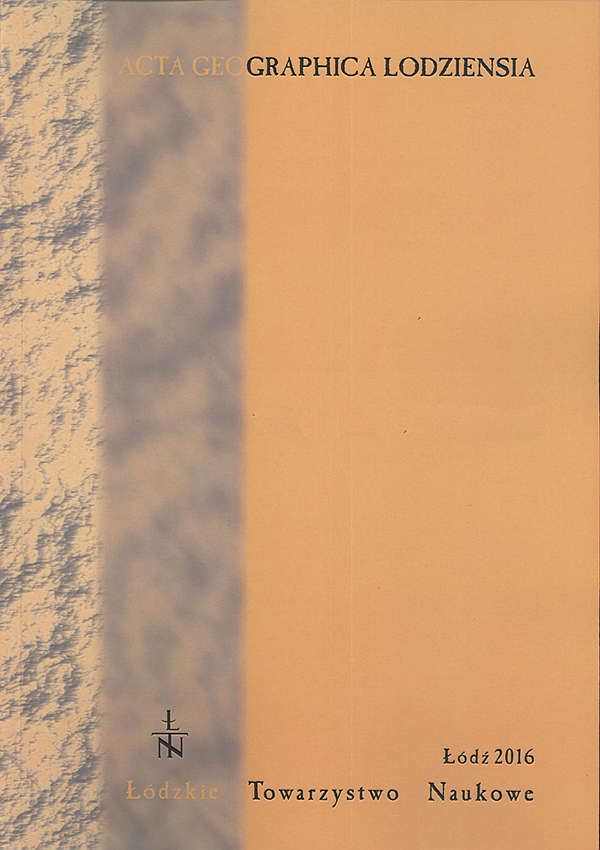Cechy uziarnienia deluwiów na tle osadów źródłowych na przykładzie zagłębień bezodpływowych
w rejonie Łupawska (Pojezierze Zachodniopomorskie)
Grain size distribution interpretation of colluvial deposits in light of source sediments on the example of closed
depressions in the Łupawsko Region (Zachodniopomorskie Lakeland)
Author(s): Marek MajewskiSubject(s): Regional Geography, Environmental Geography, Applied Geography
Published by: Łódzkie Towarzystwo Naukowe
Keywords: colluvial deposits; fluvioglacial deposits; grain size distribution, Zachodniopomorskie Lakeland
Summary/Abstract: In this article characteristics of grain size distribution are shown – colluvial deposits against sources deposits – fluvioglacial deposits. This allowed to present the grain size differences between the mentioned deposits. Deposits from two different closed depressions which are situated on sandur close to Łupawsko Region (Zachodniopomorskie Lakeland) were examined. Parameters like mean grain size, sorting, skewness, content of fraction above 4 phi, cumulative curves and frequency curves were analyzed. Firstly, colluvial deposits turn out to be a smaller deposit and a worse sorted one than the fluvioglacial base. Secondly, cumulative curves of grain size of colluvial deposit series against the curves of source deposits have weaker differentiation of particular sections and in general are situated lower on the probability chart. What is more, frequency curves of colluvial deposits possess modals of wide and shallow accumulation, which distinguish them from narrow and significantly highlighted modal values of sandur deposits. On top of that, colluvial deposits characterized with material of a significantly higher content of fraction above 4 phi than the compared sources deposits. To sum up, the used parameters and techniques of grain size analysis can be useful when it comes to genetic classification of the considered types of deposits.
Journal: Acta Geographica Lodziensia
- Issue Year: 2017
- Issue No: 106
- Page Range: 211-223
- Page Count: 13
- Language: Polish

